Email Marketing
How Artificial Intelligence and ChatGPT are Changing Email Marketing
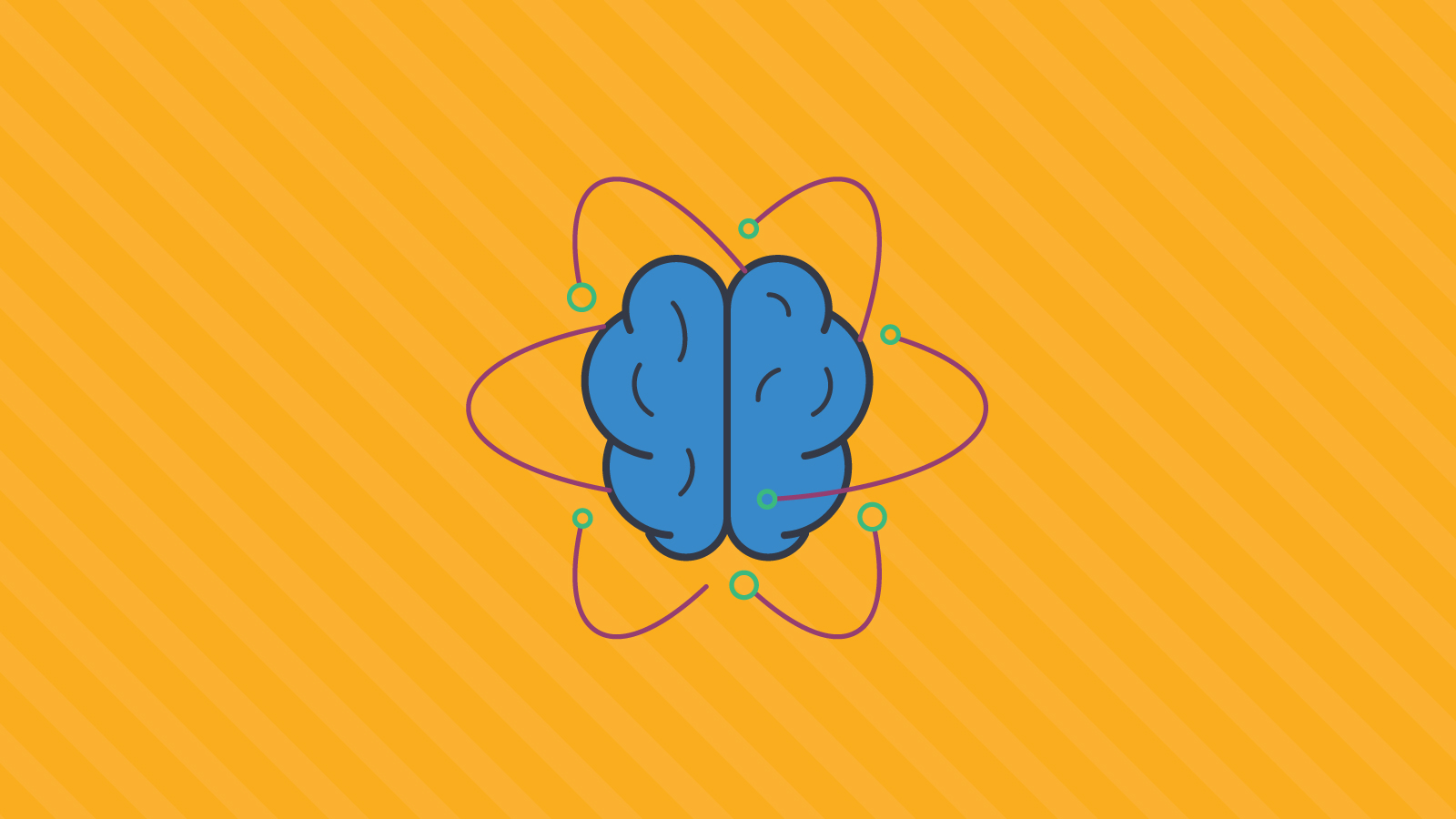
Email Marketing

Now that the masses appear to be adopting a bona-fide AI tool, email marketing and many other content and code-dependent tasks will never be the same. The question is, how exactly can you leverage big data and artificial intelligence (AI) tools like ChatGPT for your email marketing strategies?
Digital marketers have long talked about how “data is the new gold,” but for the average professional, using big data often felt out of reach without an accessible way to interpret and use the information.
There are a variety of AI tools that use big data to help you stay competitive, and we’ll look at a few in this article. ChatGPT really does merit the oft-overused label “game-changer.” So, we’ll look at how email marketers can use it to their advantage, while being aware of its limitations.
The robots are coming! If this is your definition of marketing automation or AI, you’re due for an update.
At the core, AI technologies simulate human intelligence and mimic their actions. A subset of AI, machine learning (ML), focuses on reading from large datasets, learning from them, and providing outputs, insights, and predictions.
AI marketing relies on ML to process and analyze enormous data to analyze your email marketing campaigns, results, customer behavior data, and more. By doing so, AI marketing gives you the tools to improve your email content and marketing metrics, like open rate, click-through rate, engagement rate, and conversion rate.
ChatGPT represents yet another form of artificial intelligence – generative AI. That’s because it’s a tool that generates new content using huge datasets and complex algorithms. In email marketing, generative AI could be used to come up with subject line ideas, write email copy, and even take a shot at coding emails.
Generative AI is also being used to produce images, audio, and videos. And the technology is able to do so at amazing speeds. You’ve probably seen some things generative AI has created shared on social media. If it’s blowing your mind, you’re not alone.
If you ask it questions, it will answer them, and its answers are not mere quotes from other cited sources you can click through to read. It generates ‘original’ answers. We tested ChatGPT’s creativity and got it to make up names for a new social media company. It even came up with a riddle with the AI serving as a wizard guarding a bridge.
It remembers your conversations with it, learns when you give it feedback, understands ten languages, and can produce code in many programming languages.
Other email AI tools, like the ones you’ll see in a moment, rely on machine learning that’s usually restricted to specific platforms or branches of the internet.
ChatGPT uses information from the breadth of the internet in its current version. While it’s mostly limited to data from 2021, it does have the ability to browse the web, so that’s likely to change soon.
ChatGPT amassed over 100 million users in just two months, a super-fast adoption rate for a new technology. 13.5% of email marketers already say they plan to use ChatGPT to assist in their work. See why that 13.5% figure is very significant, for a new technology.
Let’s dive into a few ways AI can improve your email marketing strategies and make your email workflow a breeze. While ChatGPT’s capabilities are new, artificial intelligence in email has been an emerging trend for years.
While the jury is still out on whether AI can effectively code emails, there’s a good chance you’re already using AI in email marketing. Here are some common ways that happens:
Perhaps the most popular way email marketers have used artificial intelligence is through advanced A/B testing. That includes automatically choosing subject lines and other email elements that have the best chance of producing results.
If you’ve ever used a tool that slowly drips out subject lines before choosing the most effective option and sending that to the rest of the list, then you’ve already used email AI. The same methods can be used to choose an effective call-to-action, a more engaging headline, or the offer that gets the highest conversion rate.
The AI analyzes initial results and crunches data from past performance to boost email engagement.
Instead of sending out a blast to your entire list all at once, artificial intelligence is used in email marketing to send those messages with perfect timing.
AI technology can analyze the times when your audience opened and interacted with your emails the most. Then, the AI tool can schedule the best moments for individual subscribers to receive your emails. This is known as predictive analytics, which involves machine learning.
Learn more when you check out the send time optimization features from Sinch Mailgun.
Here’s a potential email marketing use case for generative AI technology like ChatGPT.
Let’s say you write some email content for a general audience. You could ask ChatGPT (or a tool like it) to rewrite the content for different segments of your contact list. For example, if you’re doing marketing for a toy store, you could use AI to write email copy for new parents, moms of toddlers, grandparents, childcare providers, educators, and more.
Artificial intelligence like ChatGPT can take the data and prompts you feed it and help you scale email marketing segmentation for more relevant content.
We go on and on about personalization, and – get this – AI can superpower how you tailor your email campaigns for your audience. But how does it do this?
AI can read and analyze subscribers’ interactions with your emails and your website. Then, it can provide ideas (or even email content) for specific subscribers based on their behavior and engagement level.
Inbox Insights 2023 from Sinch Mailjet found that most email marketers don’t go far beyond personalizing emails with a subscriber’s name. However, the report also found a connection between successful email programs and those that personalize content suggestions and product recommendations.
Even transactional emails and customer reminders can benefit from artificial intelligence. Using machine learning tools, brands can understand and act upon customer behaviors and habits.
That means you could automate emails that arrive when it’s almost time for someone to reorder a product. Inventory running low? AI technology could automatically email customers to make a purchase before it’s too late. It could also determine when a subscriber seems to lose interest in a brand, automatically sending a re-engagement email. Or, it could identify and analyze behaviors that suggest when a customer is ready to receive an upsell offer.
This kind of AI may also be able to tell you when a user is having trouble using your application and needs support.
If you’ve ditched the no-reply email address and replaced it with a “Friendly From” as the sender name, you better be ready to respond.
Email AI tools can be used to review replies from your subscribers so they can be forwarded to the right person in your organization. Or, the AI could generate a helpful automatic response to emails containing common questions and concerns. While there will always be the need to talk to humans in customer service and support, AI email responses will be nearly immediate, because bots never sleep.
Now that ChatGPT has been unleashed, many marketing technology providers are looking for ways to implement and integrate it into their platforms. Things are changing quickly. By the time you read this, there will be new announcements and enhancements.
But there are also some brands that have specialized in email AI for years.
From virtual sales assistants to complex algorithms that send 1:1 messaging, let’s explore how several brands are changing email marketing with AI. The robots aren’t coming – they’re already here…
Founded in 2012, Samba.ai is on a mission to make email marketing more powerful through AI and machine learning.
Their customers are not only able to send standard marketing emails, like welcome and engagement campaigns, but also leverage the machine learning capabilities of Samba to send dynamic email content. A unique feature of the Samba platform is that it integrates with the user’s website, pulling behavior data about site visitors which can be used to enrich email with personalized recommendations.
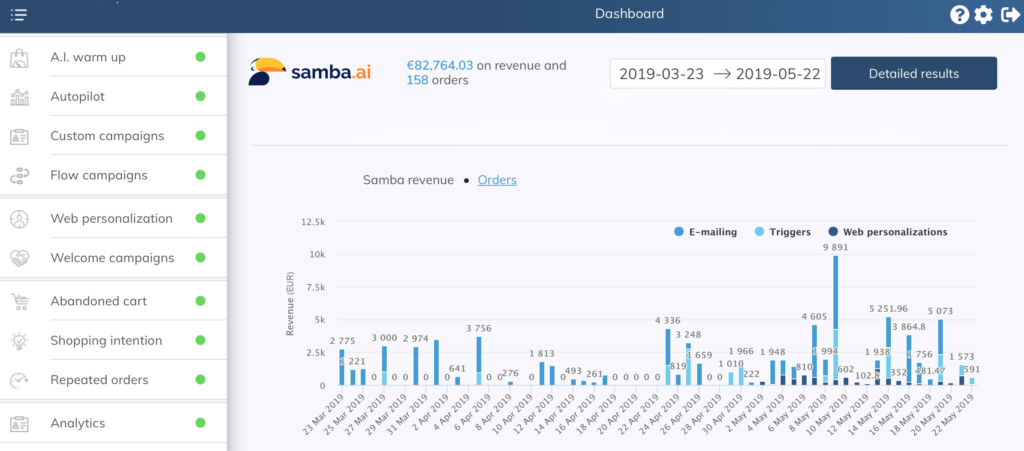
Thanks to intelligent predictive algorithms, Samba won’t need long to help you start building relationships and loyalty, as well as ROI. Samba also uses Sinch Mailgun infrastructure to help power the platform
Conversica offers virtual sales assistance that starts reaching out to leads 24/7 within minutes of a user showing interest in your brand. Through email, this AI assistant sends a chat, email, or SMS that appears to be coming from an employee.
Wondering if the copy reads like a robot? Not quite. In fact, 50% of leads reply to AI emails as they’re written in a conversational manner and can be more engaging than lead-nurturing autoresponders.

With Conversica, it’s almost like having a little robot on payroll, engaging and nurturing a lead for days, weeks, or even months until they make that sale or the lead opts out. When a lead is ready to purchase, Conversica’s lead nurturing software alerts a sales representative that it’s time to reach out and make the sales pitch.
If you’re looking for a way to customize email newsletters for individual subscribers, rasa.io has a solution. With this AI tool, you aggregate content for newsletters and set the frequency and timing. Then, the software automatically generates customized newsletters for each person on your list.
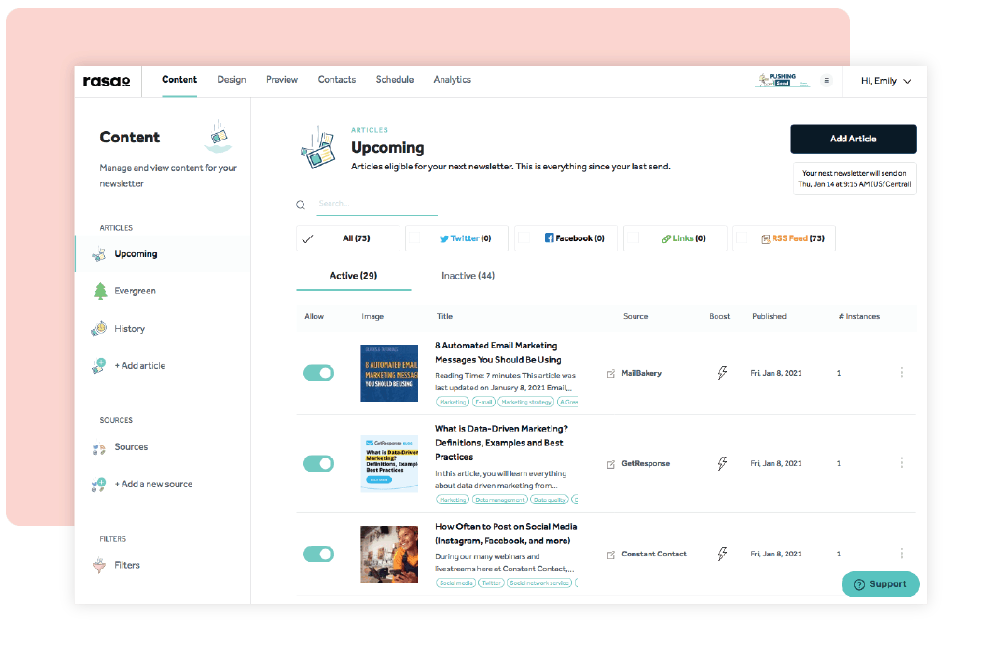
The AI built into rasa.io analyzes subscriber preferences when they interact with your content. So, as contacts click on what interests them, your newsletters continue getting more relevant and engaging with every new, customized edition.
Persado is a cognitive content platform that automatically generates the highest-performing machine-generated marketing language across different channels to inspire your audience to engage and act.
It takes into consideration emotional ontology to score and categorize words, phrases, and images in its database. The machines parse thousands of ways to convey emotion and then effectively use them in your marketing copy. Below is Persado’s workflow for creating compelling AI-generated copy.
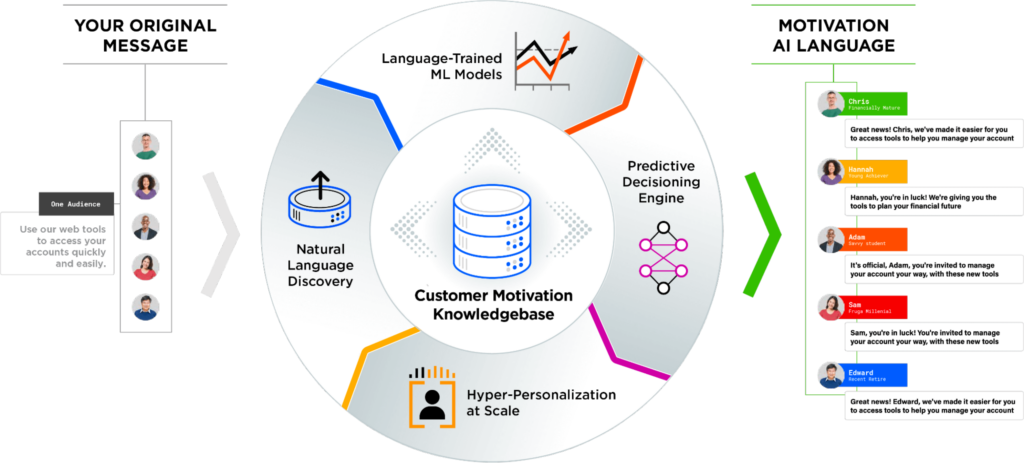
Its cognitive content platform can generate copy for email subject lines, email bodies, and landing pages. Persado boasts a 49.5% conversion lift from companies leveraging its language.
While tools like Persado can’t completely automate copywriting and testing, adopting ML and AI is critical if we want to stay competitive in our roles.
Like Persado, Phrasee takes the guesswork out of creating copy that converts. Through AI, it generates language that sounds human and is tailored to your brand voice. Quantifying human language wasn’t possible for digital marketers until now. Phrasee uses AI to quantify, generate, and optimize language for your email.
Its AI understands the emotions, sentiments, and phrases that resonate with your audience. Once you start using Phrasee, your email results drive algorithms that can generate the best possible content for your audience.
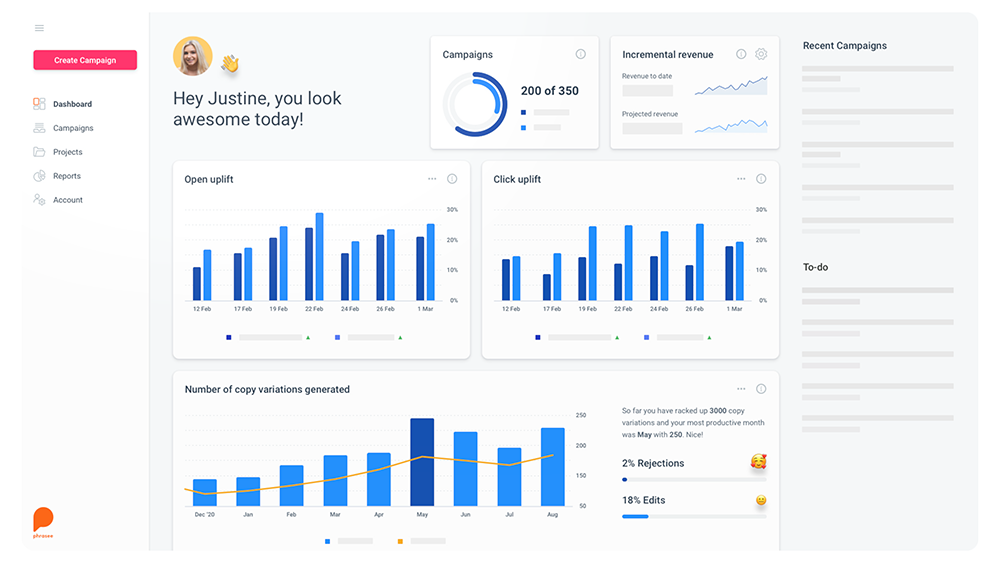
Phrasee enhances your email in the following ways:
With this software, you can increase opens, clicks, and revenue. Need more specific numbers? One Phrasee customer increased their revenue by 417% after implementing this marketing AI.
All artificial intelligence, including ChatGPT, is limited by the information that gets put into it.
From an email developer’s perspective, this means ChatGPT will struggle with tasks like creating fully accessible emails, email templates, or emails that work in dark mode. Coding emails for accessibility often requires the code to be less ‘efficient’, so the AI will recommend an approach that won’t work as well in the world we live in.
And if you try to get ChatGPT to write an accessible email by giving the AI a more specific prompt, it may still struggle with that task because there aren’t as many good examples of email coding for accessibility to draw from. So it’s pulling from inadequate and inferior examples in its quest to perform the task you need. Coding is messy and often requires adjustments, fixes, and innovations that AI would never ‘think’ to do.
This is why, for more complex and specialized tasks such as strategic planning, communicating with localized audiences and cultures, coding, and using the nuances of language, branding, humor, and personality, many email marketers and developers will find it faster and more effective to continue doing those tasks themselves.
Looked at from this perspective, ChatGPT is more like a writer’s assistant, a sounding board, a collaborator, or a librarian. In our webinar on AI and email marketing, Nicole Holden from ActionRocket called it simply, “the ultimate research tool.”
She went on to explain that it excels and helps save time at the brainstorming stage of content creation for marketing. It delivers outlines and campaign schedules. It’s pretty impressive at coming up with first-drafts for actual content, too. But it doesn’t know your audience (though you can try to teach it) or speak in completely natural language.
In the same webinar, Sinch Mailjet Email Marketing Manager, Julia Ritter, noted that in her experiments, ChatGPT used a number of “banned” words and phrases that are well-known by spam filters. Simply letting AI write email copy unchecked can result in a downward spiral that leads to a diminished sender reputation and poor email deliverability.
AI content must always be checked, edited, and verified and…
As more and more software passes the Turing test, and in particular with ChatGPT, AI will get increasingly integrated into our lives (and emails).
While AI can offer predictive content, maximize subject lines, and generate compelling offers, it still can’t guarantee the email in question looks perfect in every inbox. Outlook is still a challenge, even with ChatGPT.
Before you fully trust algorithms and AI, your campaigns need to go through a QA process to avoid embarrassment and ensure your email’s a hit – not a miss. That’s where we come in.
If you want 100% confidence that your email looks amazing across the most popular devices and clients, try us free for seven days to get unlimited email, image, and spam testing. Put a safety net in place through Sinch Email on Acid to ensure the humans on the other end receiving your email don’t see a machine error you could’ve caught.